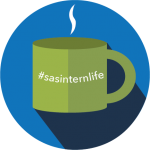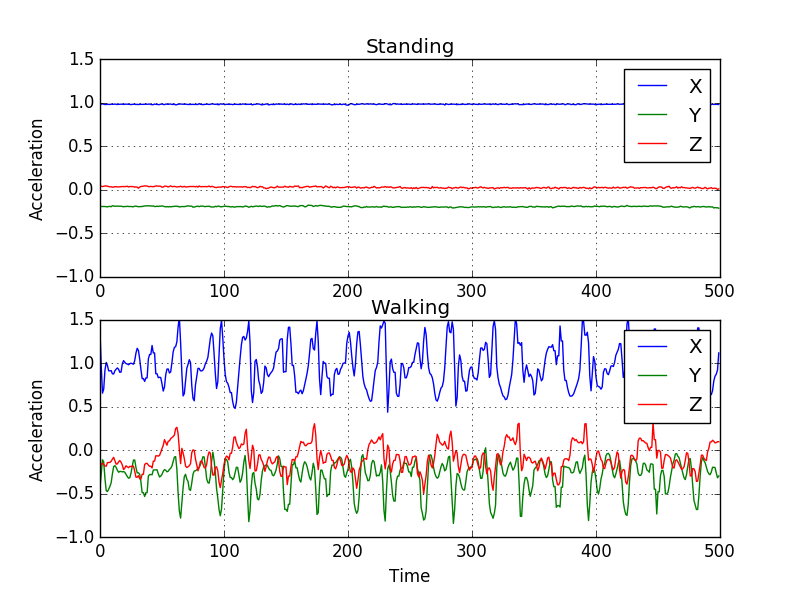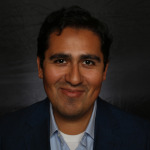 The internet of medical things, spurred by the advent of wearable sensors, has dramatic consequences in industry, healthcare, and analytics, just as the advent of the internet of things and analytics has consequences in education. When I began my internship at SAS in May, I knew little about the internet of things, wearable sensors that make up the internet of medical things, and analytics, but I knew I wanted to use data for good, and I knew how to program.
The internet of medical things, spurred by the advent of wearable sensors, has dramatic consequences in industry, healthcare, and analytics, just as the advent of the internet of things and analytics has consequences in education. When I began my internship at SAS in May, I knew little about the internet of things, wearable sensors that make up the internet of medical things, and analytics, but I knew I wanted to use data for good, and I knew how to program.
This past summer I used data from cell phones attached at the waist to predict the activity of the owner, which is an exciting application of the internet of medical things. There are a number of immediate applications of this research: contextualizing electrocardiogram signals, improving exercise analysis, and assisting in the care for elderly. As an intern, my first assignment was simply to replicate the results from an existing activity recognition paper using SAS/IML® to extract features from a time series and SAS® Enterprise Miner ™ to produce an accurate model. As I mentioned earlier, I started my summer knowing how to program in a few languages, including SAS, but I didn’t know what a time series of data was, or how to program in IML, and I knew absolutely nothing about how to use a neural network model.
My first obstacle for my summer project on the internet of medical things was fleshing out how I learn best. With respect to SAS Enterprise Miner, at first I spent time going through the documentation to get a feel for the different nodes and their respective settings and options. This was helpful to a point, but what I discovered was that I learned best when I tested different options and examined results. I found this to be true in other parts of my research; when I spent time to plot the time series data, using different graph types, styles, and filters, I was able to understand my data at a deeper level. When extracting features from a time series, it is important to extract intuitive and meaningful features that capture a characteristic of the time series that would be evident if you looked at it in its entirety. This is almost impossible without spending some time examining the data. I think this is a common trend in our new age of data science and analytics; it’s not about what you think the data should say, but about what the data are actually saying.
Throughout this project I observed some characteristics of the internet of medical things, but I also learned what I call the Internet of Intern Things.
1. Read, read, read, and read some more.
On my second day at SAS, my manager and another team member met me for lunch and we discussed some possible projects for my summer experience. I admitted that I didn’t have a particular research interest, but I was willing to try anything. My team member suggested a project and later sent me a folder of recent publications related to the topic. I dutifully saved the folder to my computer and printed the PDFs that seemed the most intuitive and easiest to understand. I read the documents, highlighted what I thought was important, and launched into the project. That was my first mistake. For example, I began searching for a filtering mechanism, because that’s what the project required, but I didn’t intuitively understand my data and its form enough to be able to explain why I needed a filtering mechanism. Days later my mentor asked me some questions about the data, just to be sure we were on the same page, and I realized I wasn’t sure about my answers. Not only was I embarrassed, but I was worried that the time I had spent on my project was wasted. Of course as an intern, no time spent failing is wasted, because failures are learning experiences, but I was nonetheless disappointed. Fortunately for me, my mentor was very understanding. From this experience I learned that taking time to contextualize your data at the beginning of a project is not only helpful, but necessary. Moreover, prioritizing reading papers for research, and papers or articles suggested by colleagues is helpful. Several times throughout the summer, my mentors, with much more experience than me, recommended well-known papers or recent articles that were relevant to my field of study and interests. I learned that it is valuable to take time each week, if not each day, to read a short paper or several articles to stay up to date and informed. As an intern, reading helped me to understand the “buzz words” of my field, like “data science” and “machine learning,” and gave me talking points when I met with my colleagues for lunch. I know, that sounds a little over the top. Like really, “talking points” for lunch? But as an intern it is important to set yourself apart, and being well-read helps.
2. Collaboration is not only helpful, but imperative.
If I were to summarize my summer experience at SAS into one word, it would be “collaboration.” Collaboration was crucial to my summer project, and to navigating such a large organization as an intern. After giving my first presentation of my preliminary work on my summer project, several other interns contacted me and shared their projects, and we found overlaps. While I was working on modeling human activity using feature engineering with a goal of classifying healthy or unhealthy heartbeats, others were working on motif discovery and motif comparison.
These projects logically overlap in our ultimate motivation: classification of health signals. My project was focused on extracting information from a time series, while others were reviewing the actual pattern of a time series in a pictorial sense. After realizing this overlap, we began to compare notes and share helpful resources for visualization. In my final intern presentation, I actually used a visualization application shared by my fellow intern. Our collaboration not only benefited our summer projects, but it was also in the spirit of the atmosphere of modern tech companies who are concerned with team work and shared work effort. Moreover, it points to the central theme of the internet of things: everything is connected in some way, and thus should be used in tandem for the most efficient and accurate results.
3. Prepare and ask questions.
You know those professors who on the first day of class say “You can never ask enough questions! There are no dumb questions.”? I won’t use this time to reiterate the very important action of asking questions, but instead will add my own flavor. Don’t just ask questions, prepare questions. What do I mean? Exhaust your own resources before you ask for help, but don’t take too long. Continually ask yourself what is confusing before asking for help. Read. Did I say that again? I can’t stress it enough. Don’t get me wrong, I spent countless hours in my teammates’ offices this summer asking some dumb questions, and also asking some questions that took us both a week to answer. But, I believe when you come prepared with specific questions and sources of confusion that teammates are more willing to help and answer questions. During the summer I also had the opportunity to email individuals who published the data I used for my project. In writing that email, it was very important for me to be sure of what I knew before I asked questions. It goes back to the internet of things: What do I know? What do I want to know? What resources of information can I use to learn what I want to know?
My intern experience this summer has impacted my research focus, education plans, and career path. Another amazing opportunity that grew out of my summer experience is presenting a student e-poster at the 2016 SAS Analytics Experience conference in Las Vegas. Besides being able to present my research, I am also very excited about this opportunity because I will be able to hear a talk given by Jake Porway, founder and executive director of DataKind, an organization committed to using “data for good”, along with many other interesting talks, sessions, and demos.
Having an experience at SAS (my own personal Internet of Intern Things) in the middle of my college career was perfect timing. I realized that knowing mathematics, statistics, and computer science are very important, but recognizing the overlaps and interconnectedness of these disciplines is crucial, just as in the internet of things, and as I have found, in the internet of medical things.










2 Comments
Elaine—It was wonderful to work with you this summer. Keep up the great work, asking all those questions and most of all getting to know your data intimately. Best, Anya
Good pointers for any research project: read, explore, ask questions, and model. I will add the word "repeat." The first time I read a paper that discusses an unfamiliar topic, I expect to absorb about 20%. Now explore the data and ask questions. With your additional insight, reread the paper. Ahh! Now maybe 40% makes sense! Iterate until convergence!